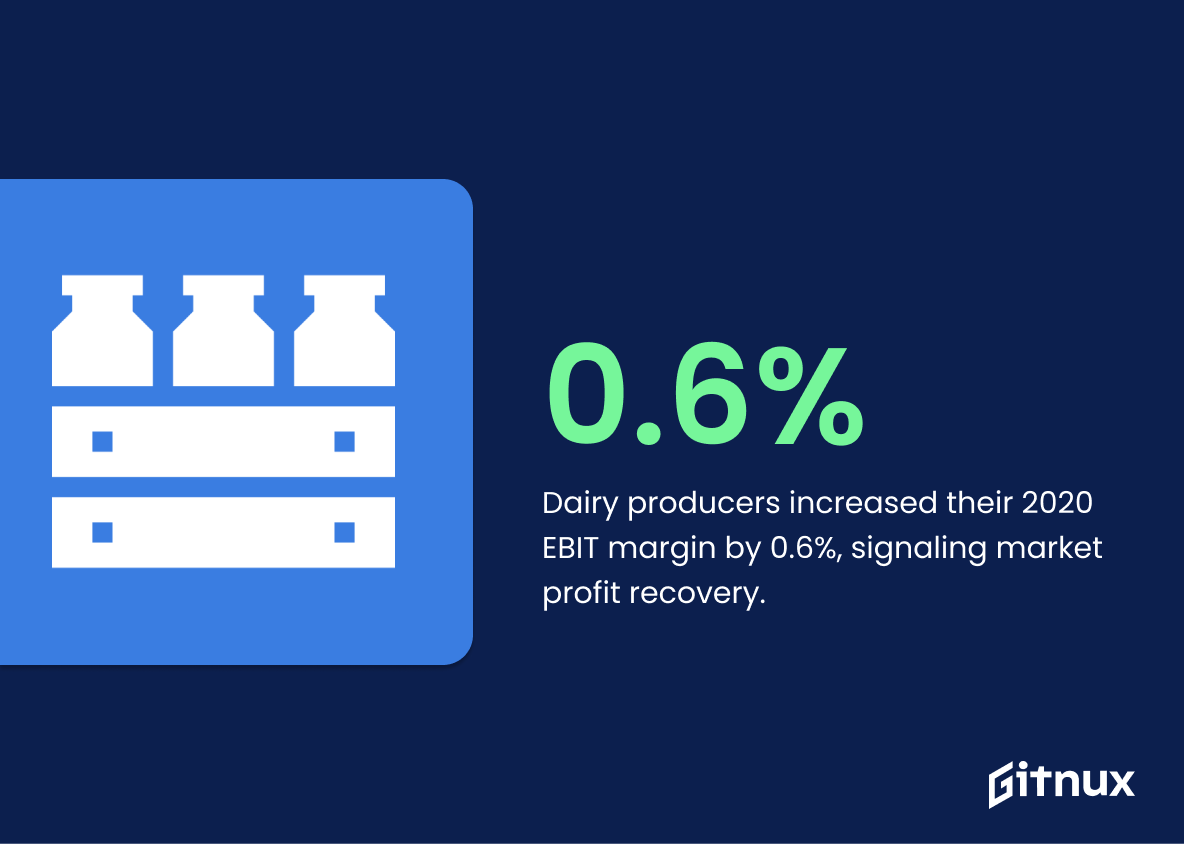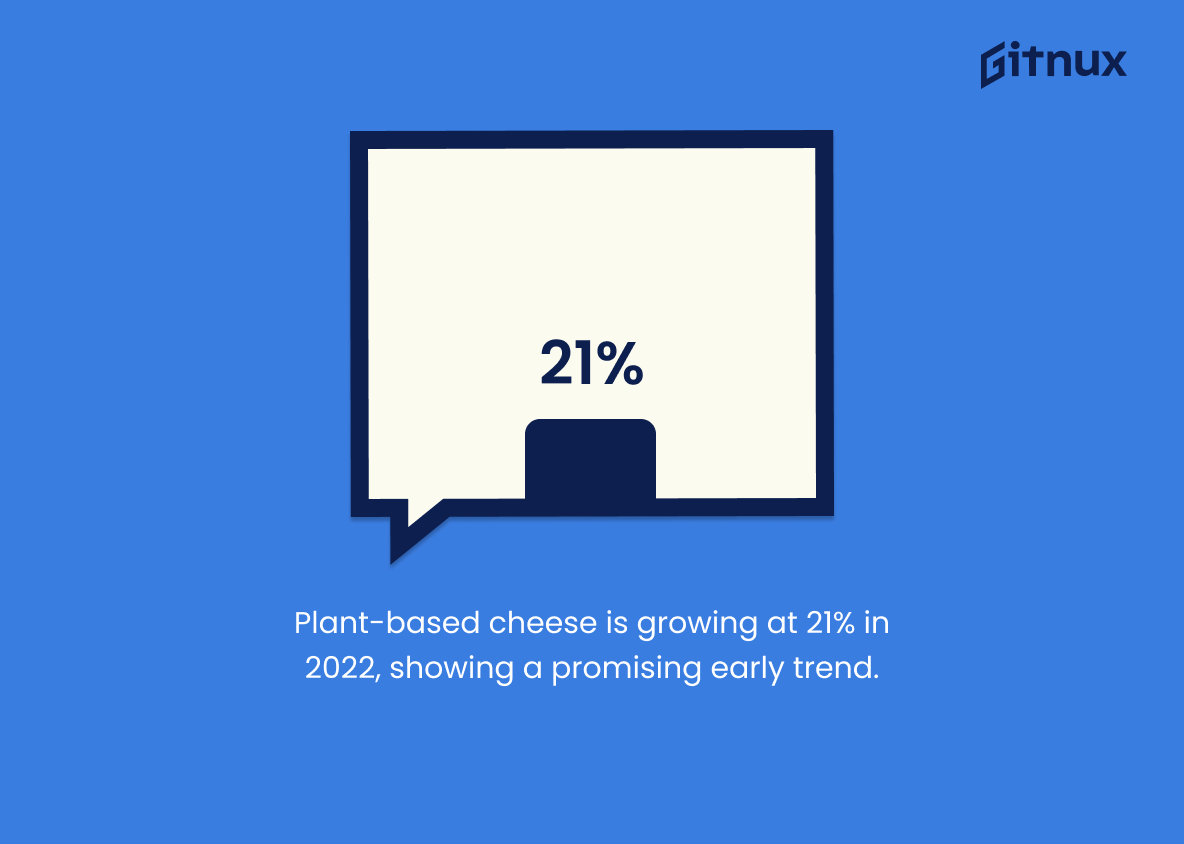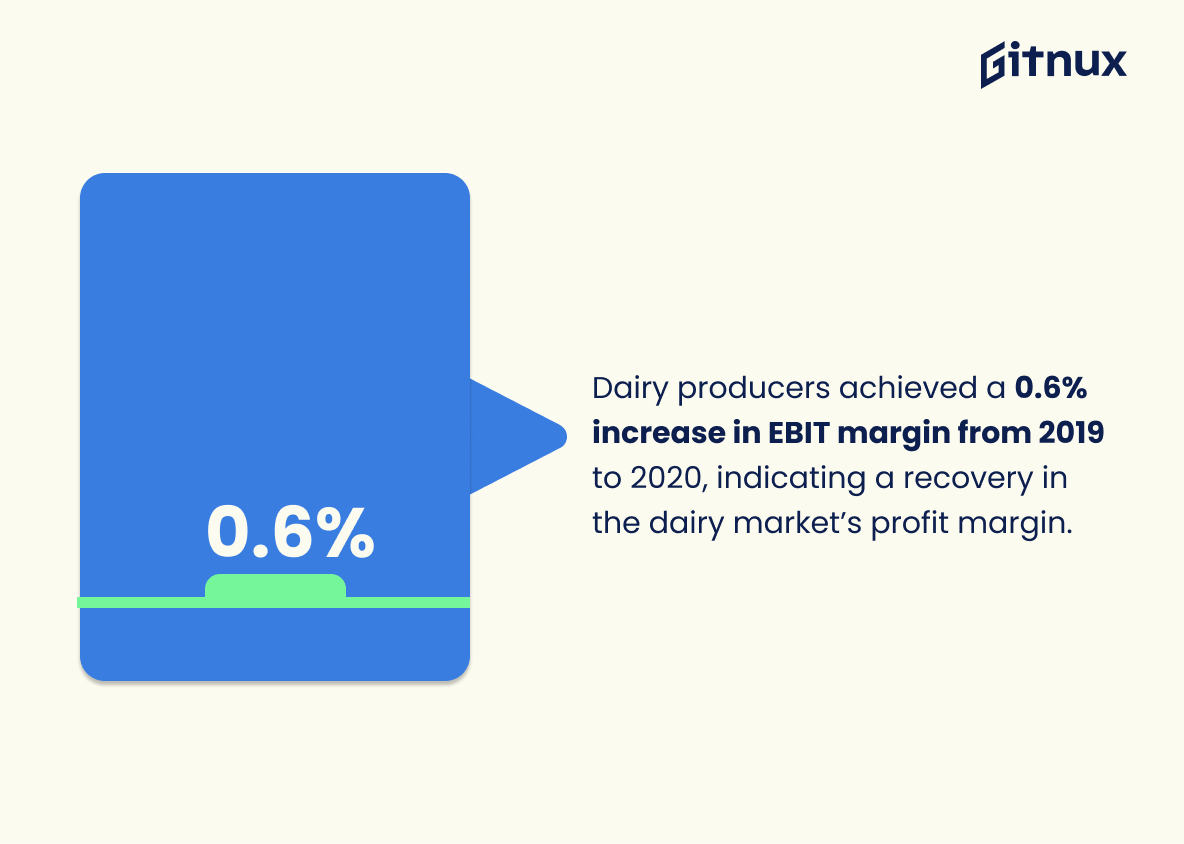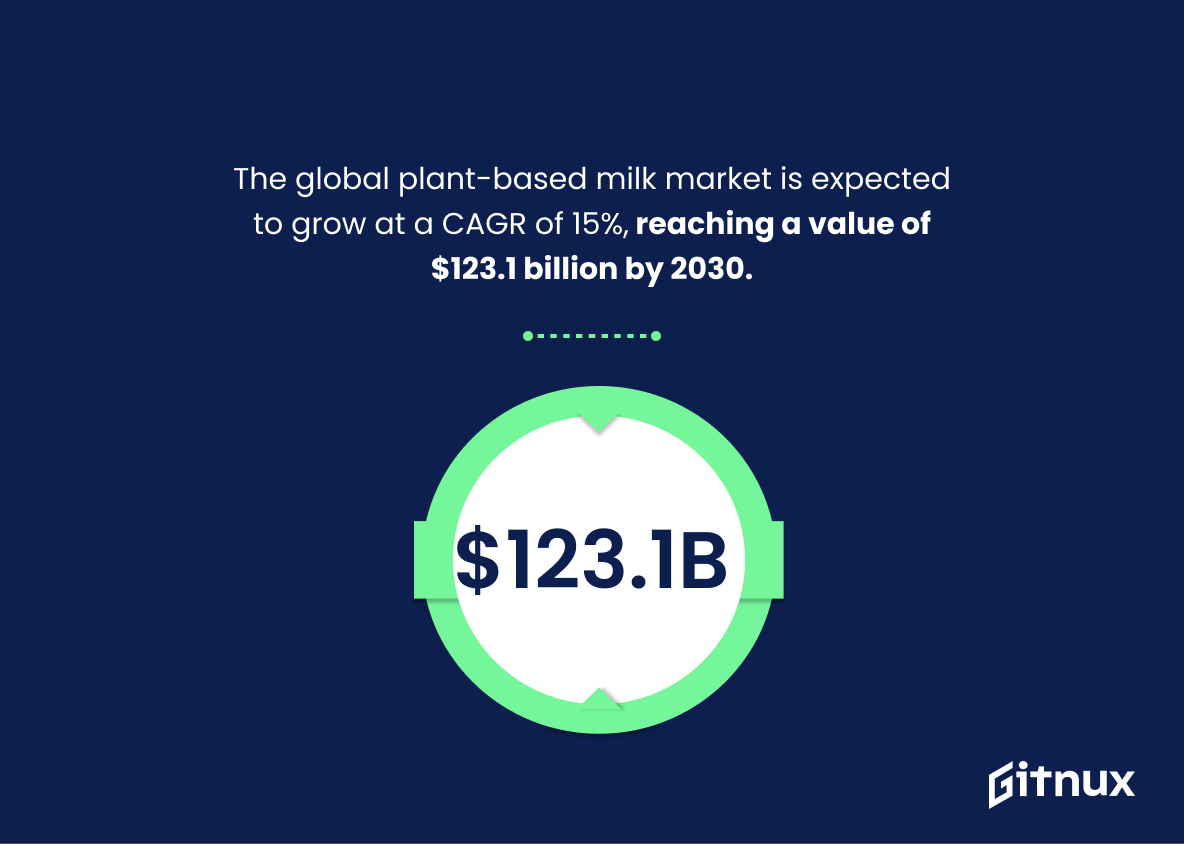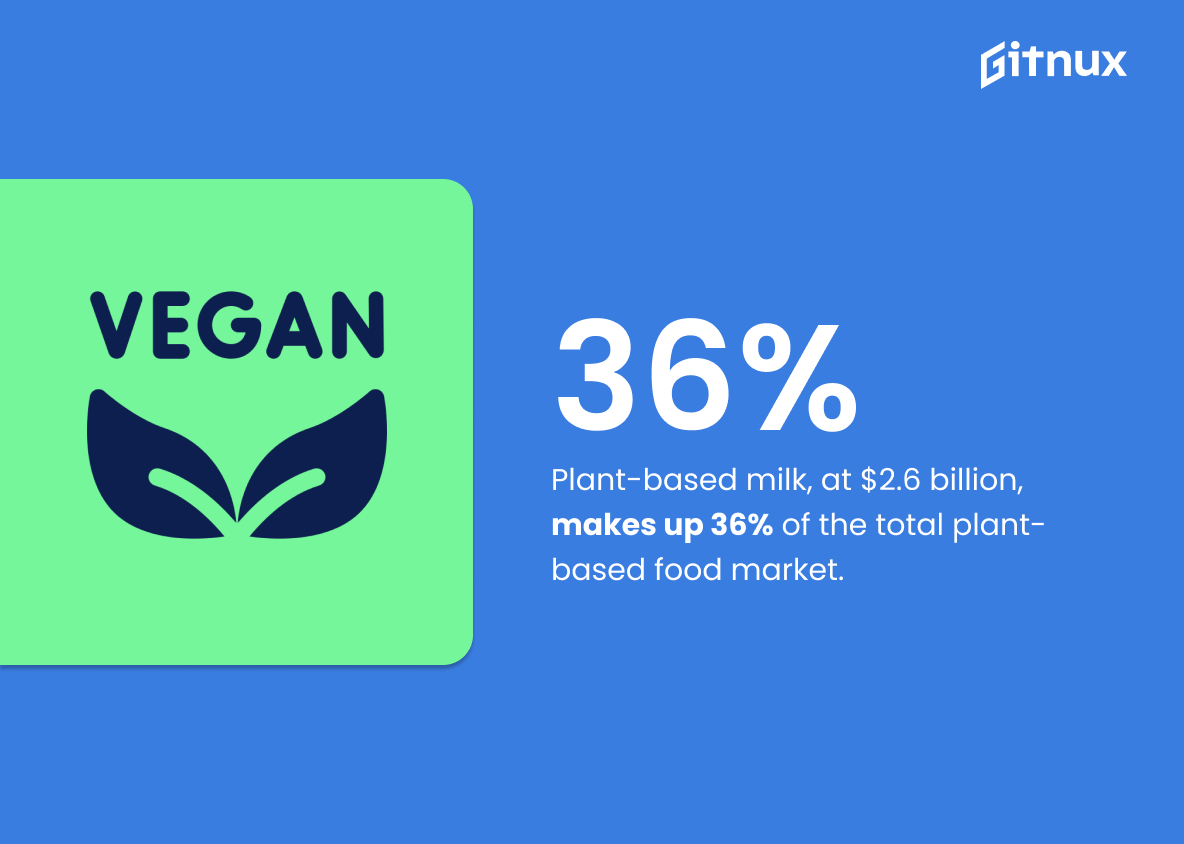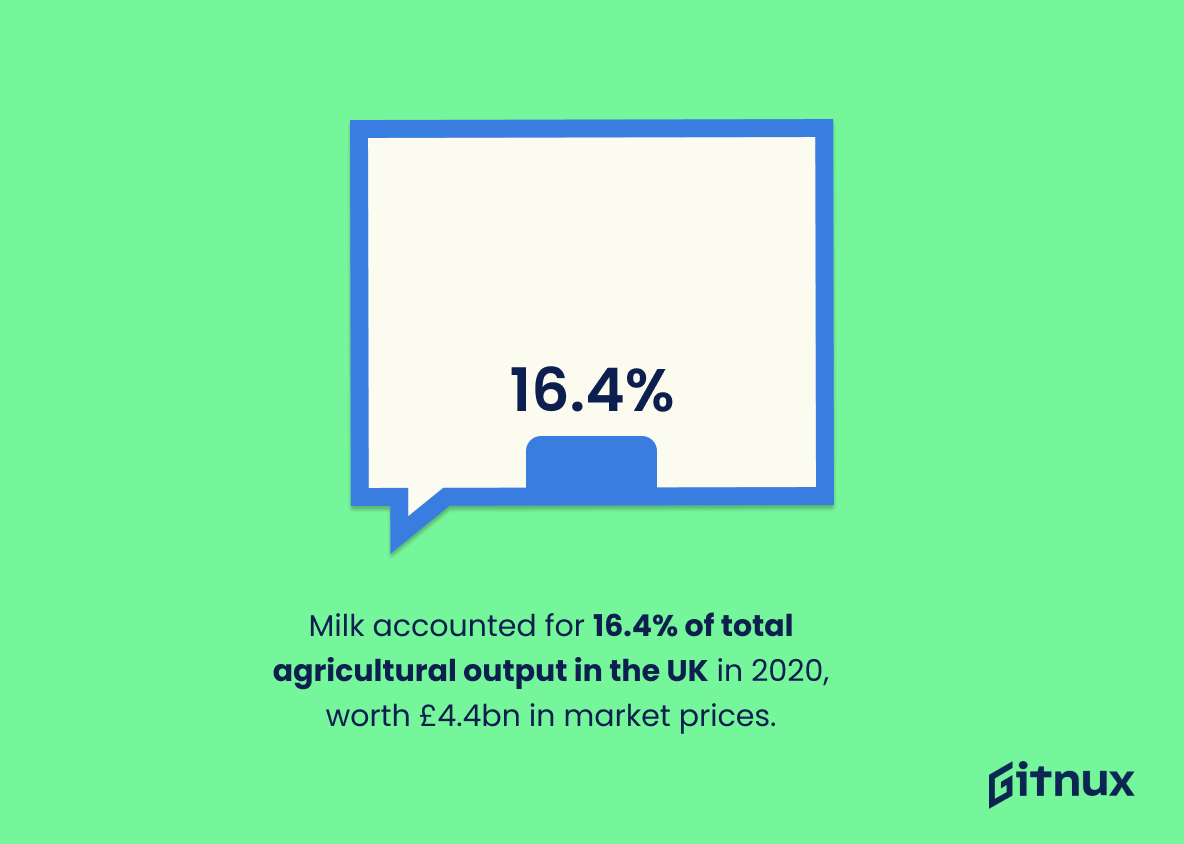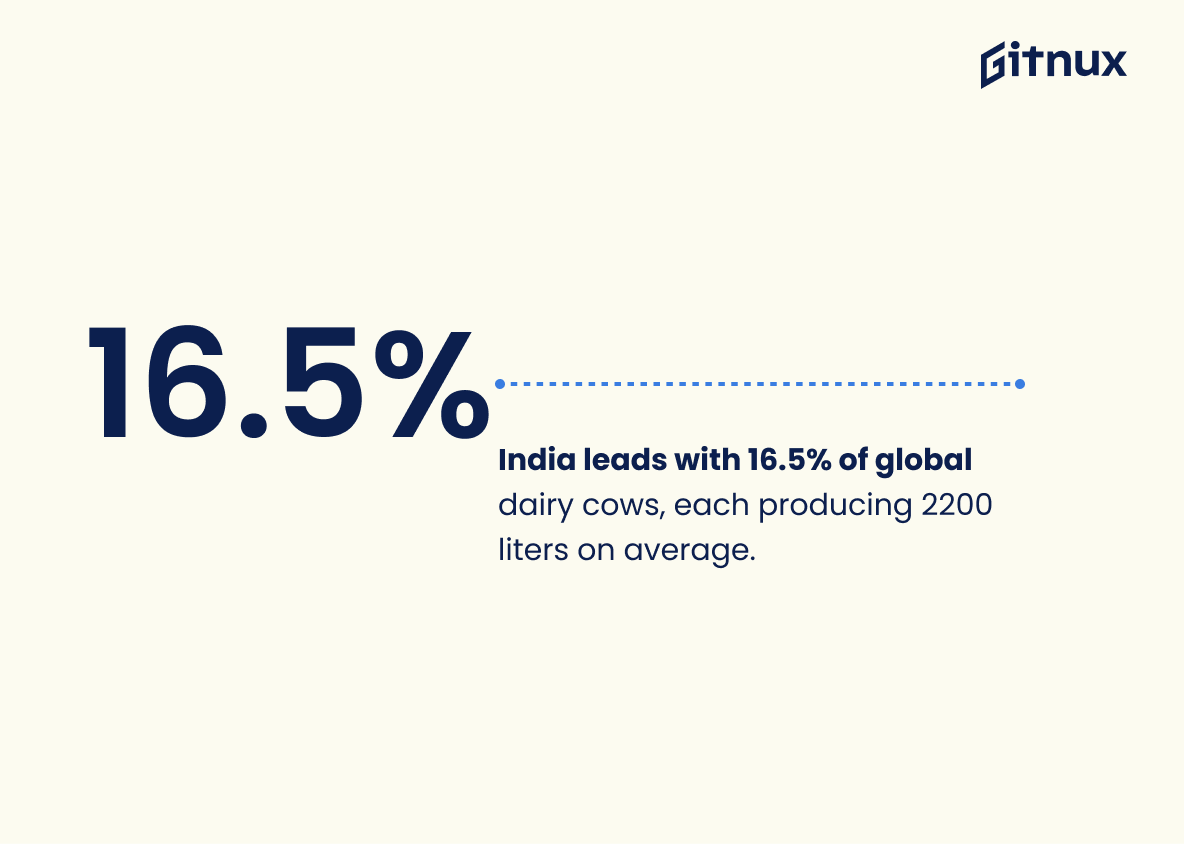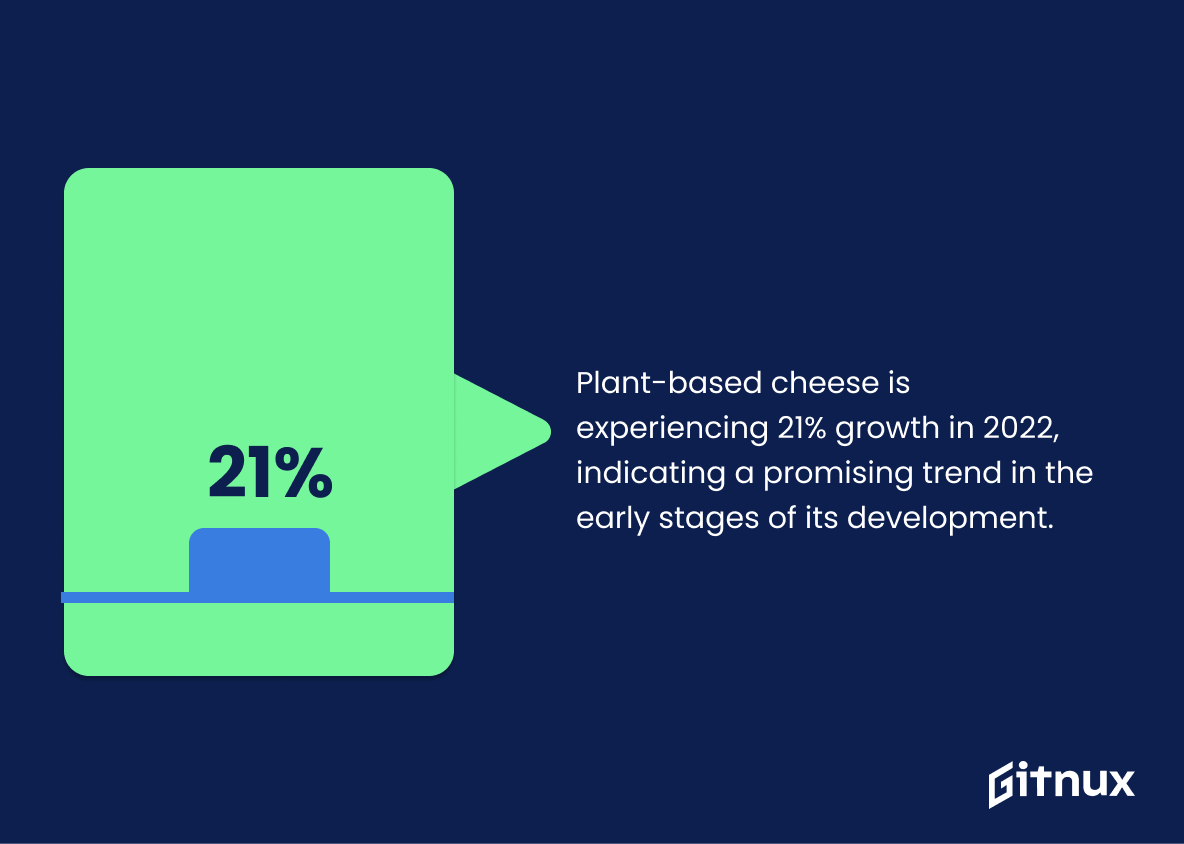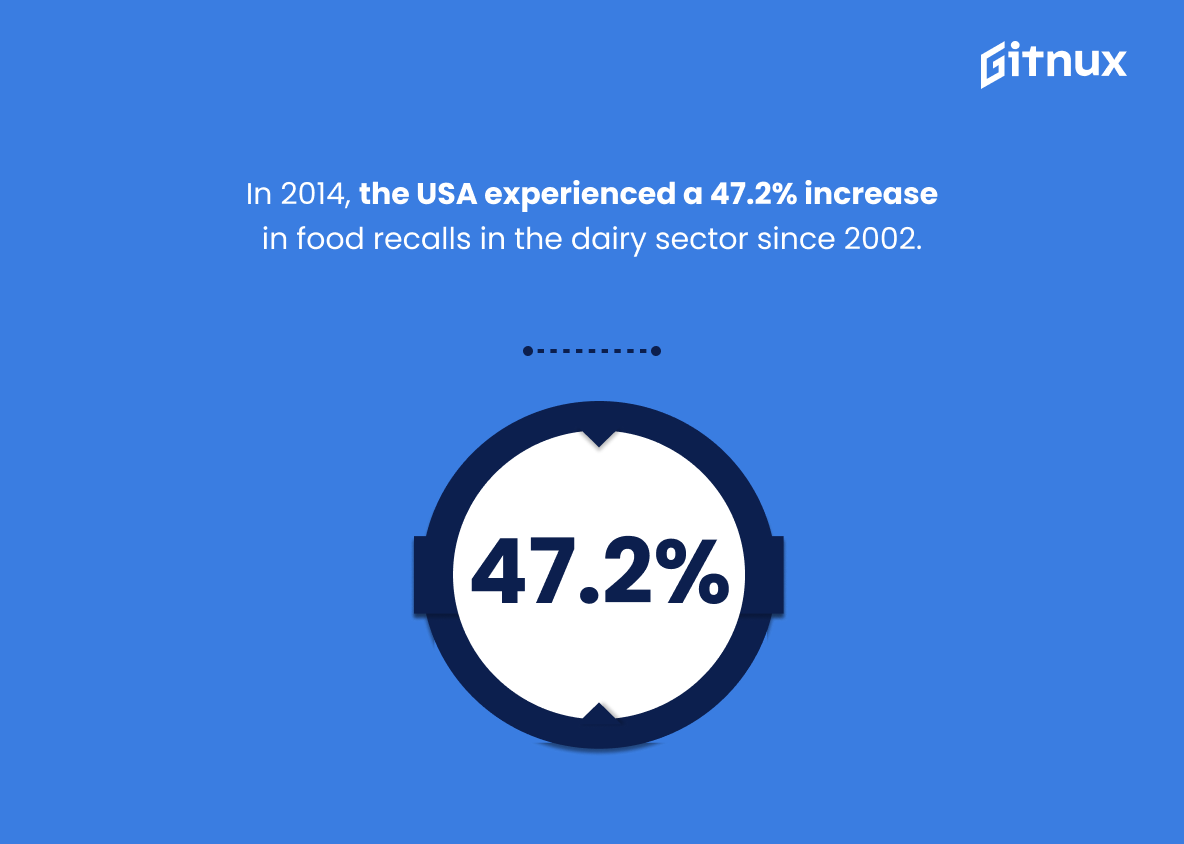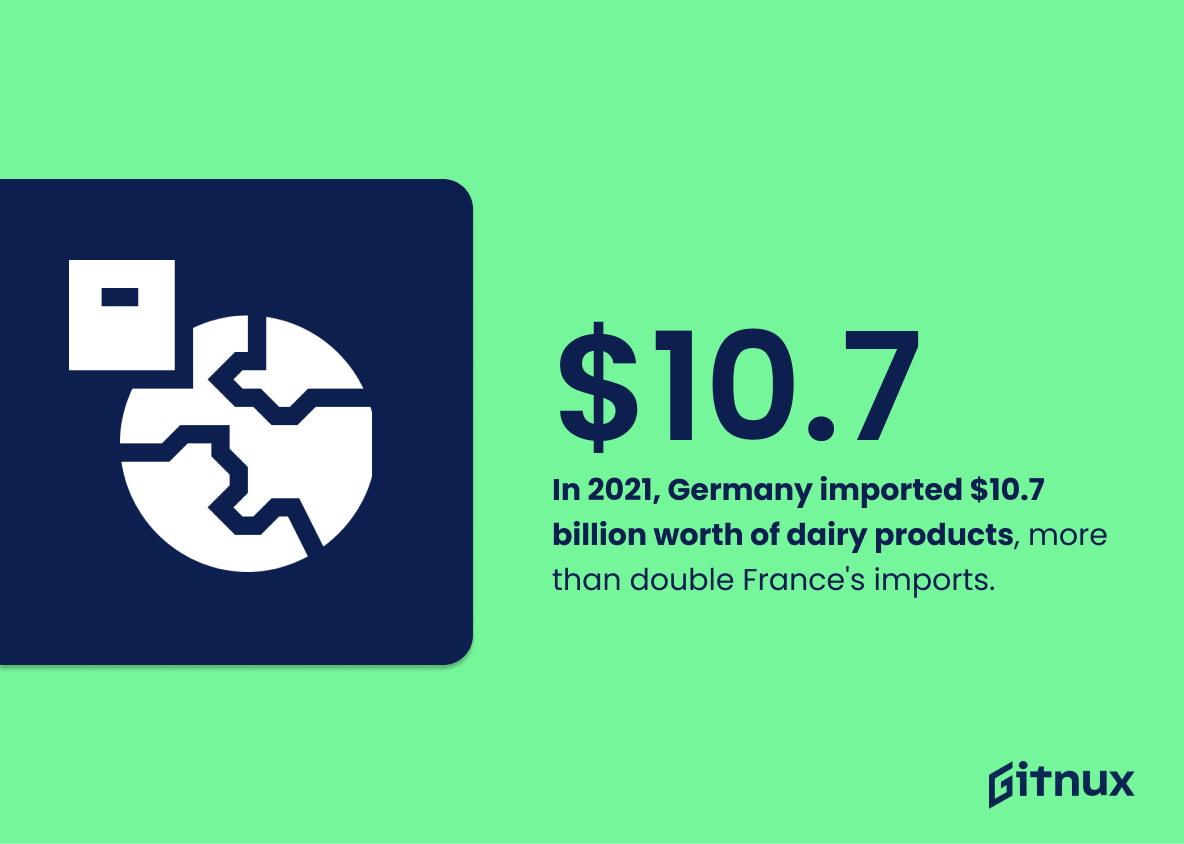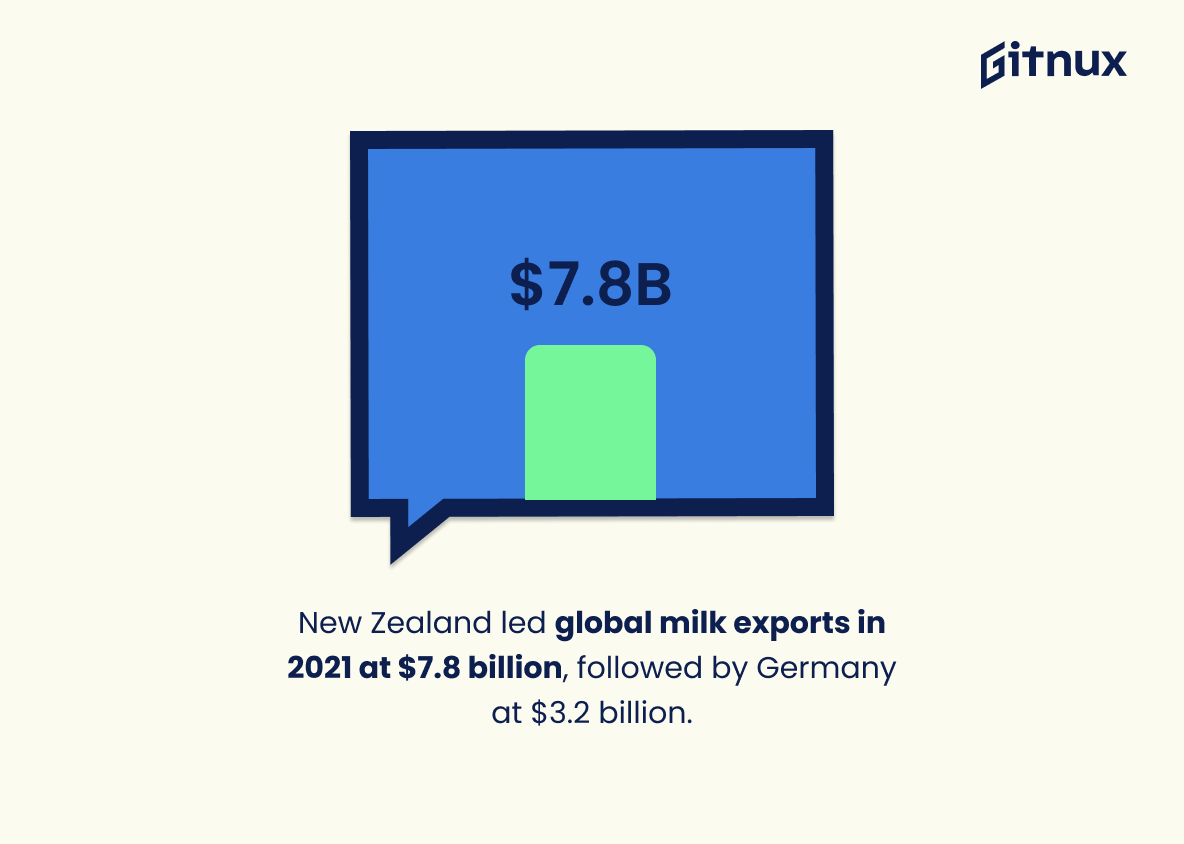The dairy industry is an important part of the global food system, providing essential nutrition to millions of people around the world. In this article, we’ll take a look at some of the most interesting statistics about the dairy industry, including production, consumption, and economic impact.
We’ll also discuss the latest trends in the industry and how they’re affecting the global market. By the end of this post, you’ll have a better understanding of the dairy industry and how it’s impacting the world. So let’s get started.
Dairy Industry: Most Important Statistics
The plant-based milk category is the most developed plant-based category, worth $2.6 billion, accounting for 36 percent of the total plant-based food market.
Plant-based cheese is experiencing 21% growth in 2022, indicating a promising trend in the early stages of its development.
Dairy Industry: Statistics Overview
The global dairy market was valued at 871 billion U.S. dollars in 2021, showing the longevity and success of the dairy industry over the past 6,000 years.
This statistic is important as it demonstrates the resilience of the dairy industry, and its ability to remain profitable and relevant despite changing consumer trends.
Dairy producers achieved a 0.6% increase in EBIT margin from 2019 to 2020, indicating a recovery in the dairy market’s profit margin.
Dairy producers are able to remain profitable despite low milk prices, which is essential for the sustainability of the dairy industry.
The global plant-based milk market is expected to grow at a CAGR of 15%, reaching a value of $123.1 billion by 2030.
The plant-based milk market is growing rapidly and is expected to become a major player in the dairy industry in the near future.
This growth is likely due to the increasing demand for healthier and more sustainable products, and it is important for dairy companies to be aware of this trend in order to remain competitive.
The plant-based milk category is the most developed plant-based category, worth $2.6 billion, accounting for 36 percent of the total plant-based food market.
Plant-based milk is becoming increasingly popular, and is now the innovation leader in the milk category.
This could have a significant impact on the dairy industry, as plant-based milk is becoming a viable alternative to cow’s milk.
Milk accounted for 16.4% of total agricultural output in the UK in 2020, worth £4.4bn in market prices.
This statistic matters in the context of Dairy Industry Statistics because it provides an indication of the economic importance of the dairy industry in the UK.
It also highlights the importance of the dairy industry in terms of agricultural output, which is an important factor in the overall economy.
India has the largest dairy cow population in the world, accounting for 16.5% of the global total, and produces an average of 2200 litres of milk per cow.
This highlights the importance of India’s dairy industry in the global market. It also provides insight into the productivity of dairy cows in India, which is essential for understanding the potential of the industry.
Additionally, this statistic can be used to compare the productivity of dairy cows in India to other countries, allowing for a better understanding of the global dairy industry.
Plant-based cheese is experiencing 21% growth in 2022, indicating a promising trend in the early stages of its development.
Plant-based cheese is becoming increasingly popular, indicating a potential shift in consumer preferences and a need for dairy industry players to adapt to the changing market.
In 2014, the USA experienced a 47.2% increase in food recalls in the dairy sector since 2002.
This statistic is important because it highlights the increasing trend of food recalls in the dairy sector, which is an issue that the industry will want to address in order to ensure the safety of their products.
Germany was the world’s largest importer of dairy products in 2021 with an import value of 10.7 billion U.S. dollars, more than double that of France.
There is the importance of Germany as a major importer of dairy products. This information can be used to inform strategies for dairy producers and exporters, as well as to identify potential markets for dairy products.
New Zealand was the leading exporter of milk worldwide in 2021 with an export value of 7.8 billion U.S. dollars, followed by Germany with 3.2 billion dollars.
This statistic is important for the dairy industry as it shows which countries are the main exporters of milk and how much they are exporting.
This information can be used to inform decisions on production, pricing, and marketing strategies.
Conclusion
In conclusion, the dairy industry is a major economic force in the United States, providing jobs and economic stability to many rural communities. The industry is also an important source of nutrition for many Americans, providing essential vitamins and minerals.
The dairy industry is constantly evolving and adapting to changing consumer preferences and technological advances, making it an important part of the US economy. With the right policies in place, the dairy industry can continue to be a major contributor to the US economy for years to come.
References
1 – https://www.statista.com/topics/4649/dairy-industry/#:~:text=In%202021%2C%20the%20value%20of,1%2C128%20billion%20dollars%20by%202026.
2 – https://blog.a-insights.eu/en/agri-food/dairy-industry-statistics-growth-margins#:~:text=Dairy%20producers%20achieved%20the%20largest,saw%20the%20gross%20margin%20improve.
3 – https://www.strategicmarketresearch.com/market-report/plant-based-milk-market
4 – https://gfi.org/marketresearch/
5 – https://commonslibrary.parliament.uk/research-briefings/sn02721/
6 – https://www.ciwf.org.uk/media/5235182/Statistics-Dairy-cows.pdf
7 – https://www.euromonitor.com/article/five-trends-shaping-dairy-products-and-alternatives#:~:text=Plant%2Dbased%20dairy%20is%20set,early%20stages%20of%20its%20development.
8 – https://www2.deloitte.com/content/dam/Deloitte/ie/Documents/ConsumerBusiness/ie_Dairy_Industry_Trends_and_Opportunities.pdf
9 – https://www.statista.com/statistics/869449/leading-importers-of-dairy-products-worldwide/
10 – https://www.statista.com/statistics/805280/top-exporters-of-milk-global/
